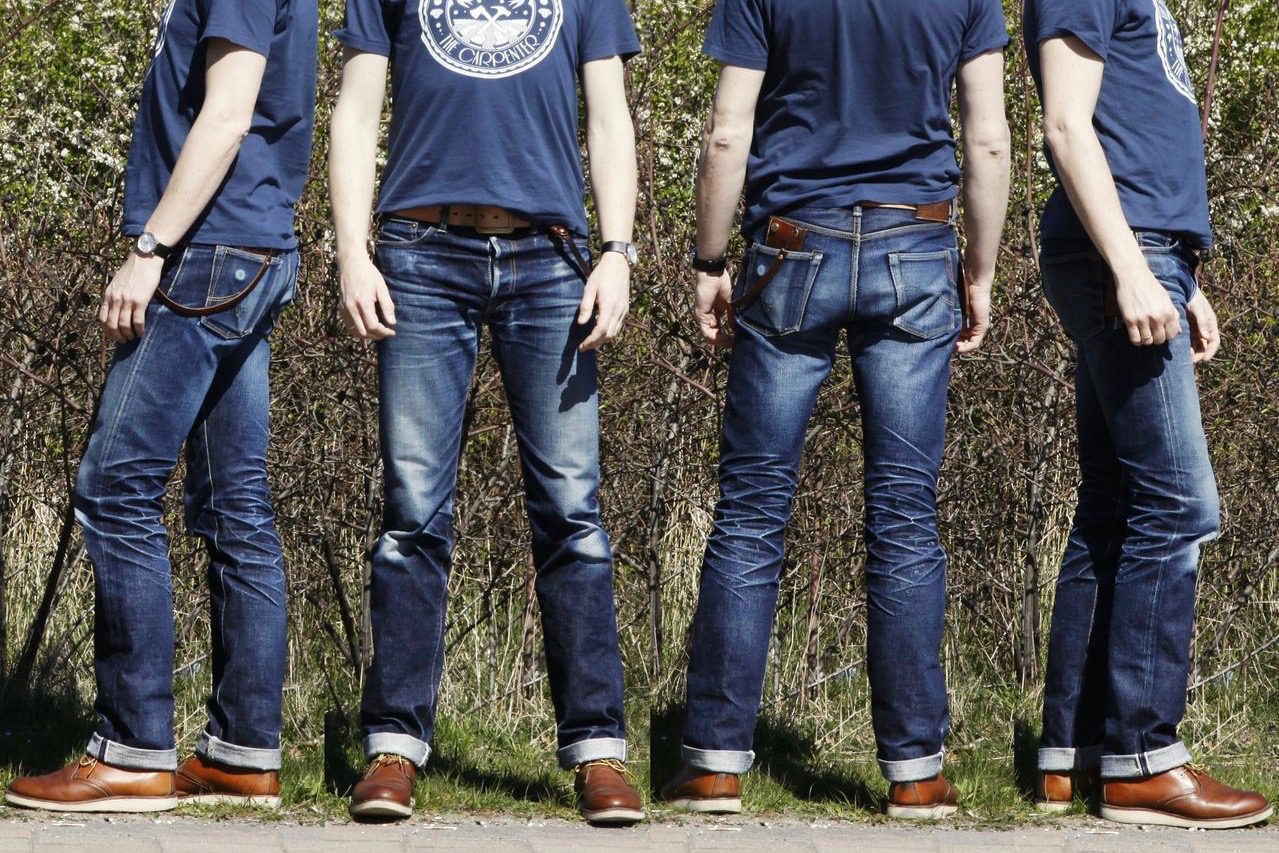Find Jeans That Fit with the 4 Elements of the Anatomy of Fits
Back when jeans were workwear, fits were much looser than they are today, and there were fewer options to choose between. But more choice hasn’t made it easier to find the perfect fit.
How a pair of jeans fit is essential for how good you feel wearing them. But we’re probably all guilty of owning more jeans than we need. One of the less fortunate explanations is that many of us struggle to find jeans that fit.
In this video—which is a preview of the lesson about fits in the Denim 101 course—you’ll learn about the four elements of the anatomy of the fit, which determine how jeans sit on your body.
Prefer to listen?
In episode 10 of the Denimhunters Podcast, Thomas discusses his fit guide for men. You can listen in the embedded player above or on Apple Podcast, Google Podcast, Spotify, and Stitcher.
There’s no correct answer to how jeans should fit. But a good fit is one that balances out your proportions and highlights your best attributes.
To find jeans that fit, you need to consider the four elements of the jeans’ anatomy, which determine the fit of your jeans.
#1: Shape of the Leg
It’s the shape of the leg that gives you the different types of fits. The most common types of fits include: skinny, slim, regular, and loose. And the leg can be straight or tapered.
Be aware that you should always try on new jeans, or at least carefully measure them against a pair you already own. What’s labelled a regular fit by one brand may be identical to what another brand considers a slim fit.
#2: The Rise
The rise is the distance from the crotch joint to the top of the waistband. Because the back rise of jeans is curved, you get a figure-hugging fit.
There are four types of rises: low rise, mid rise, high rise, and drop crotch. To get a good looking and comfortable fit, the rise should follow your silhouette.
#3: The Length
The length is the measurement of the inseam, starting from the crotch and then all the way down to the leg opening.
When trying on the jeans without shoes, the front of the hem should rest on top of your instep, and the back should kiss the floor. Just don’t forget to factor in a little shrinkage, even with pre-shrunk denim.
#4: The Denim
When it comes to denim, there are two main options to choose between: with or without stretch.
The key advantage of having stretch is that the jeans become a lot more comfortable, especially if it’s a slimmer fit. But for regular and loose fits, rigid denim usually works best.
Use Your Body Type to Find Jeans That Fit
Slim and skinny are the most popular fits. They can indeed look quite flattering if you have the body type for it. The problem is not everyone who wears them does.
Circling back to the opening, a good fit is one that balances out your proportions. So to get a fit that fits your body type, you need to focus on your build. You can learn more about in the Denim 101 course.
On the Hunt For Raw Selvedge Jeans?
Launched in 2011 by Thomas Stege Bojer as one of the first denim blogs, Denimhunters has become a trusted source of denim knowledge and buying guidance for readers around the world.
Our buying guides help you build a timeless and adaptable wardrobe of carefully crafted items that are made to last. Start your hunt here!
Share





